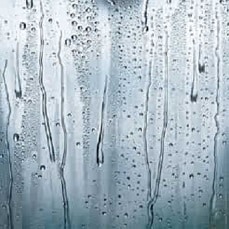If buildings could talk, they would ask for Infrared
Homes can be a health hazard
Old, uninsulated housing is often damp, cold and mouldy, which contributes to poor health. Even new housing by being airtight and with little natural airflow can have consequential damp problems causing mould and fungi.
Damp homes have been linked to an increased incidence of respiratory illness. Each day in NZ 780 people fail to turn up to work, citing health problems caused in their homes (ShapeNZ Survey).
Damp in buildings damages the materials and décor
Damp in buildings damages masonry, causing salt damp in masonry and rot and rust in wood and metal components. Damp in fabrics and decoration causes mould and peeling of wallpaper and paint flaking.
Damp homes cost more to heat
Moisture in a building actually worsens its heat loss. It presents an initial barrier to heat absorption by other materials (by absorbing the heat itself) and via conduction (e.g. wet masonry), leads away heat from surfaces and objects.
The good news is that Infrared Heaters can solve these problems, where other forms of heating just encourage them.
Reduction of Condensation
Convection heating works by warming the air around the heater, which creates
convection currents that carry the warmth around the room. Warm air has a high capacity to hold moisture and when it meets a cold surface, condensation will occur. This increases the likelihood of mould, wood rot, and salt damp or flaking paintwork.
In contrast, Infrared warms the surfaces of objects without warming the air. The relative humidity in the air remains low and when the air meets a warm surface, condensation does not occur.
This is one of the primary benefits to buildings of Infrared Heating. For similar reasons our heaters are also particularly well suited to use in bathrooms, our mirror and glass towel rail heaters will heat the bathroom whilst reducing the likelihood of damp and mould.

Reduction of existing damp
Water absorbs heat specifically well at 3 microns and lower which is the range Herschel far infrared heaters operate at. The infrared from the heater will begin to warm the masonry of a building. When masonry is damp, it absorbs and emits infrared poorly and air circulation actually needs to be encouraged to remove the evaporated water vapour. As masonry dries out, the thermal reflectivity of the room also improves. This is because water in damp masonry initially absorbs the heat and does not emit the warmth back into the room, whereas dry masonry re-emits well.
Our infrared heaters help to dry walls and plaster and preserves paintings and fabrics, which makes it particularly useful for preservation of historical buildings.
Infrared heaters such as the Herschel Advantage range can also be used for flood recovery purposes. Far Infrared is better absorbed by the wet masonry over time and dries from the inside out. Hotter heaters such as quartz and gas blowers are less efficient driers, because their harsher heat flash-dries the surface of the wall, creating a “skin” under which bubbles of water vapour then form, causing blistering of the surface of the masonry.
Watch our explanatory video
You can watch our explanatory video about infra-red heat from this page.
